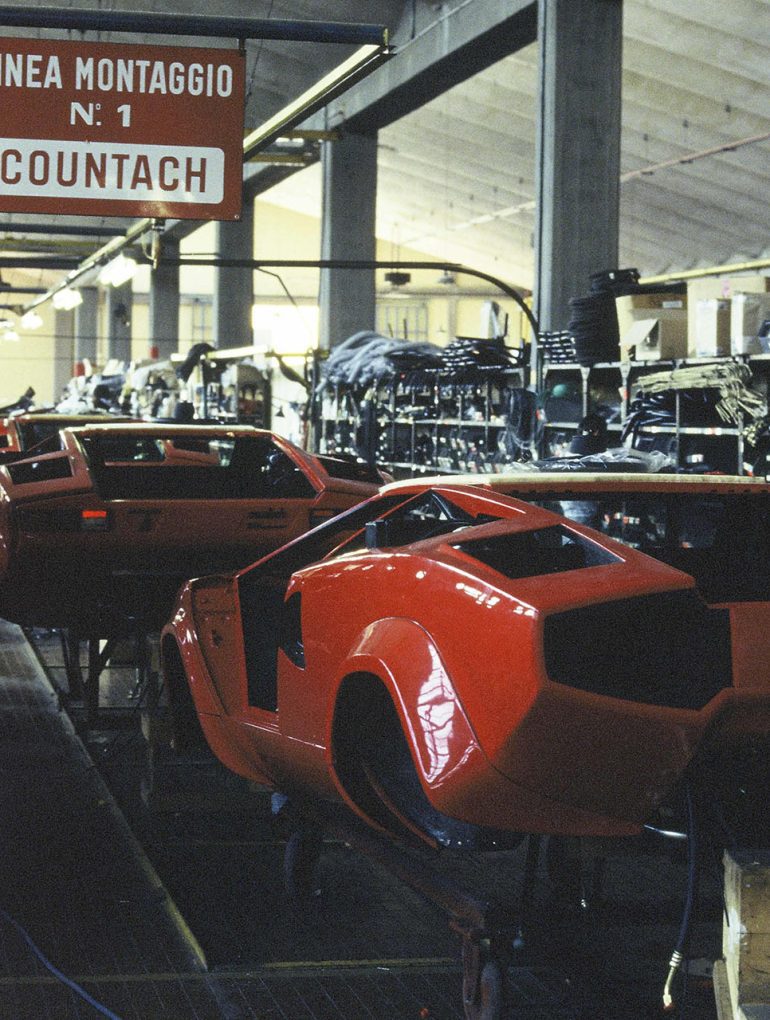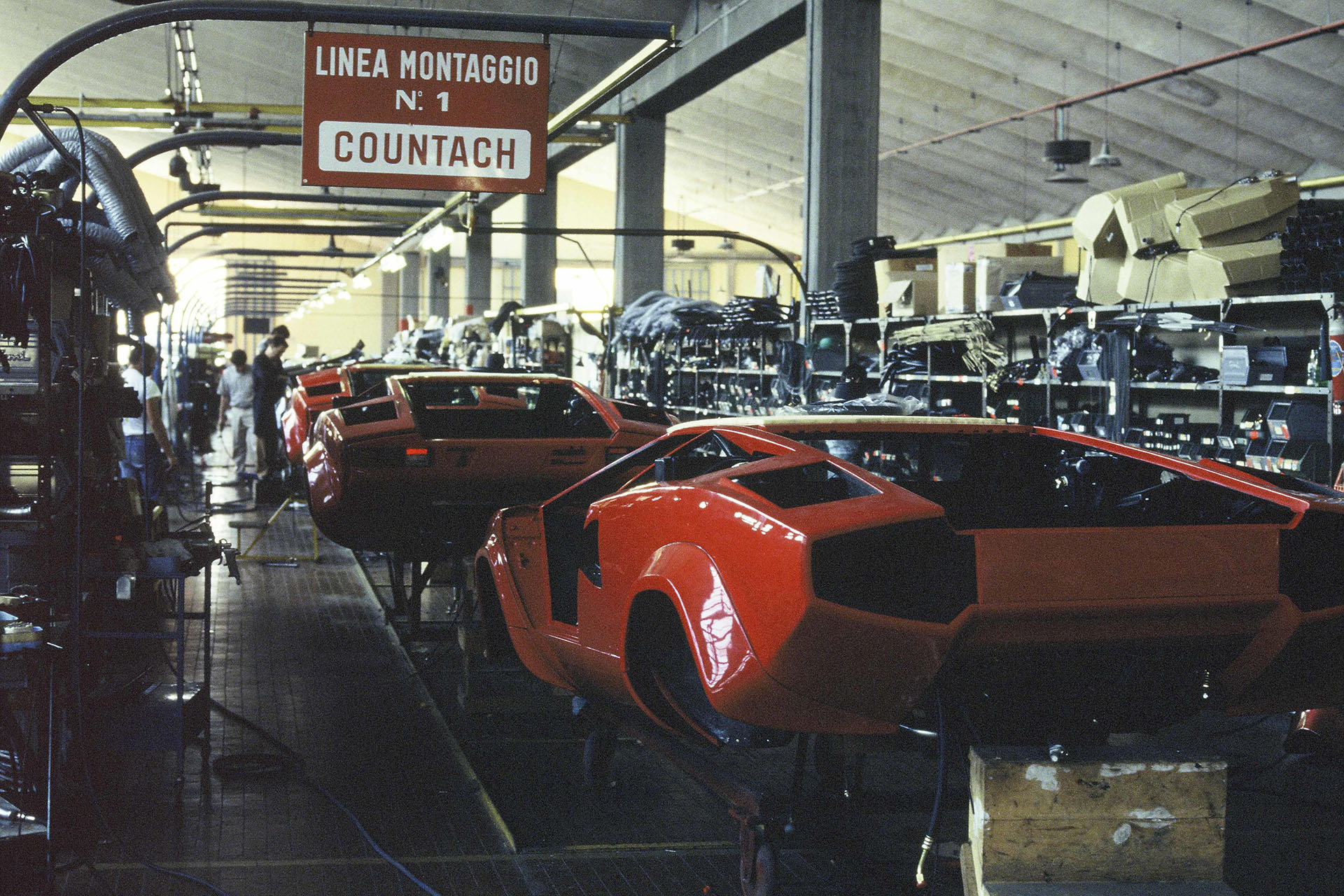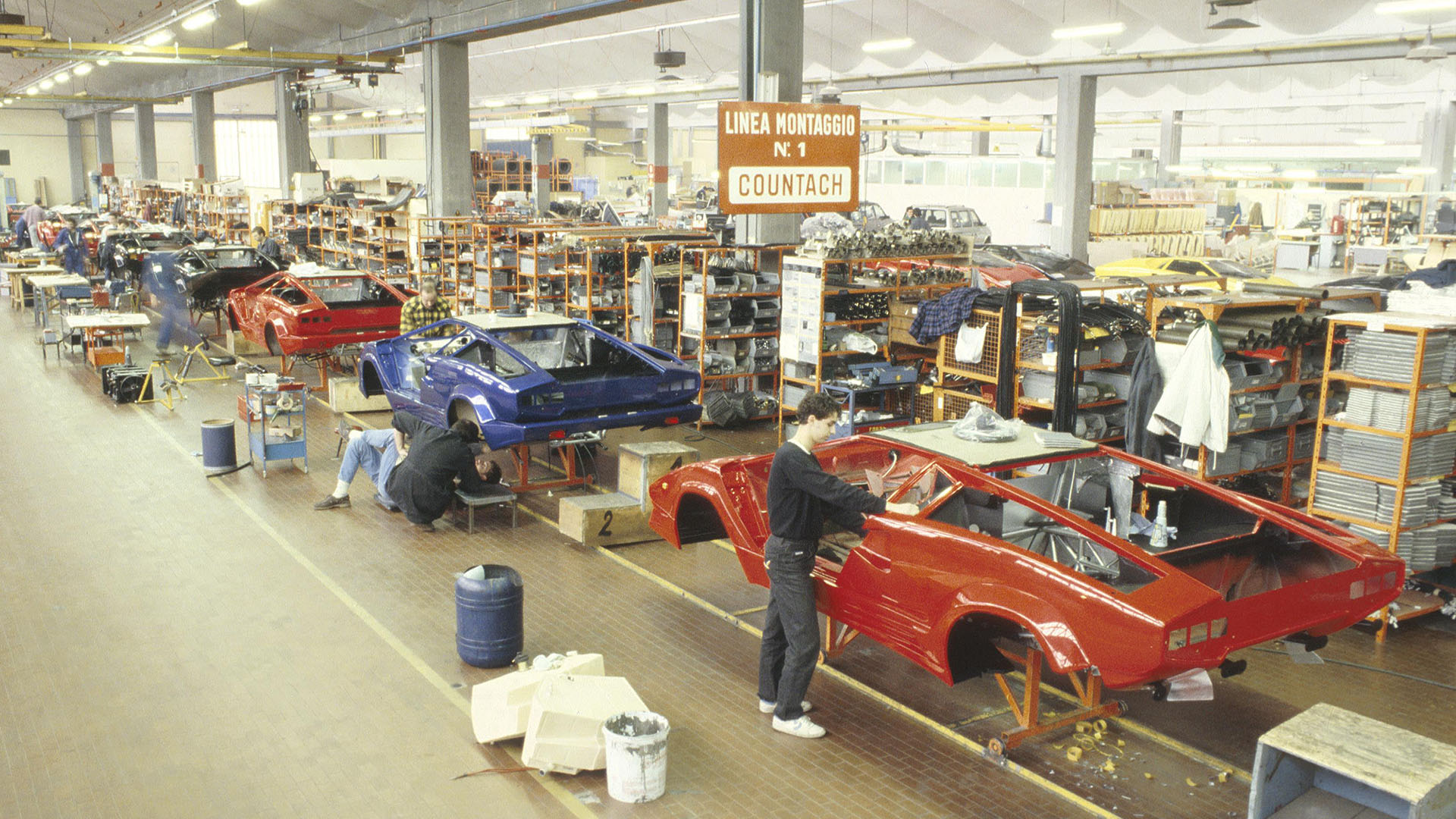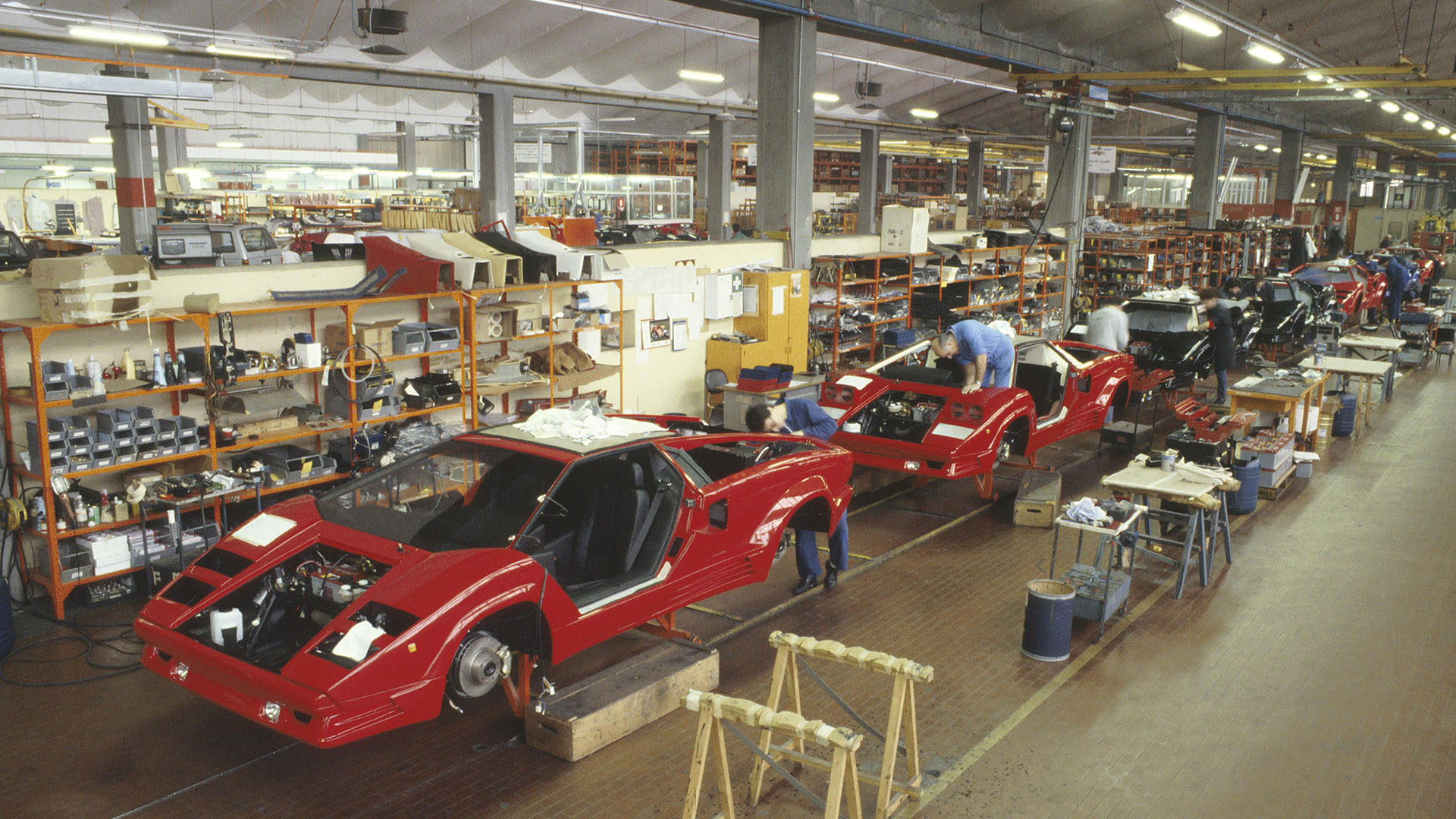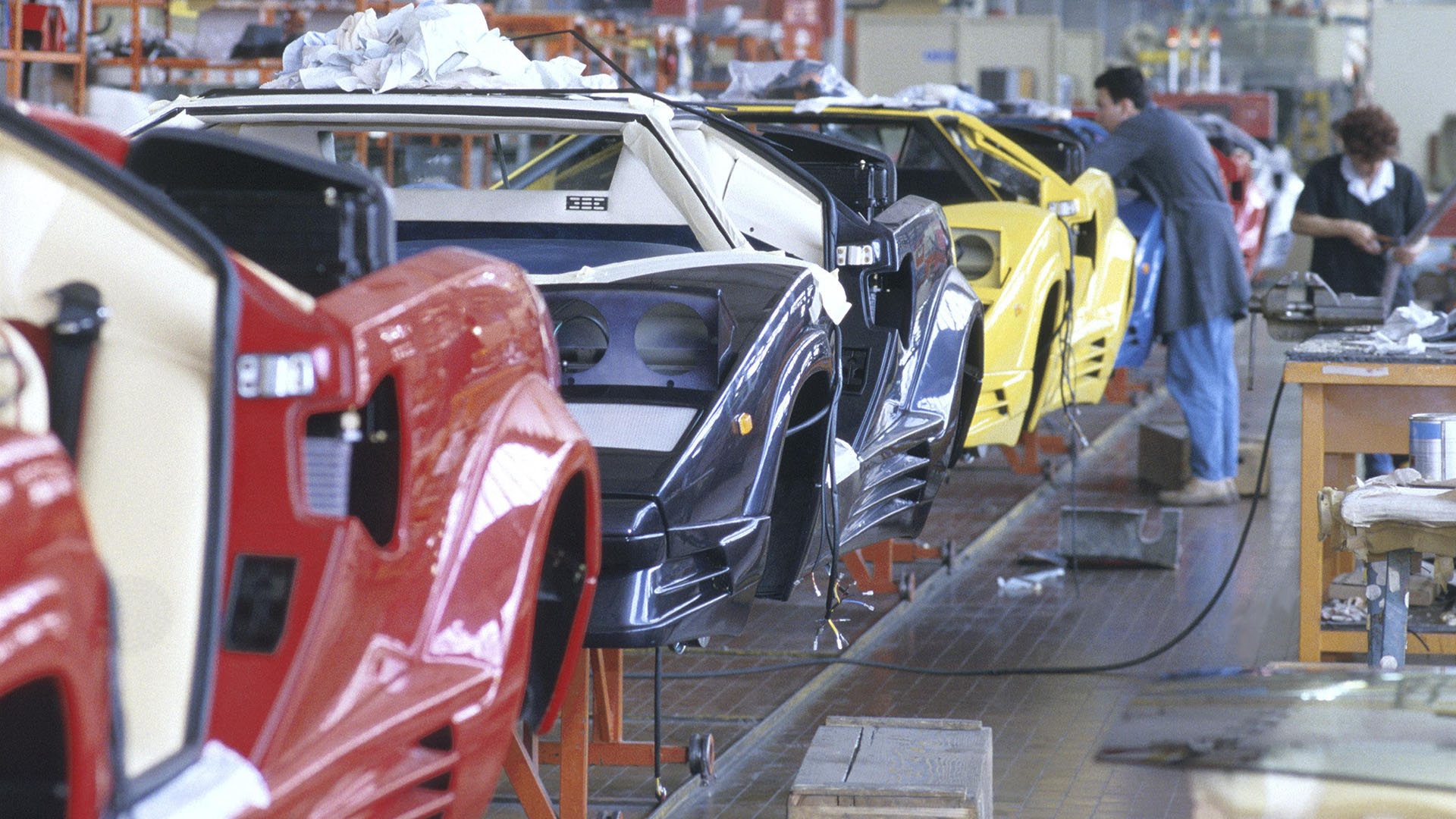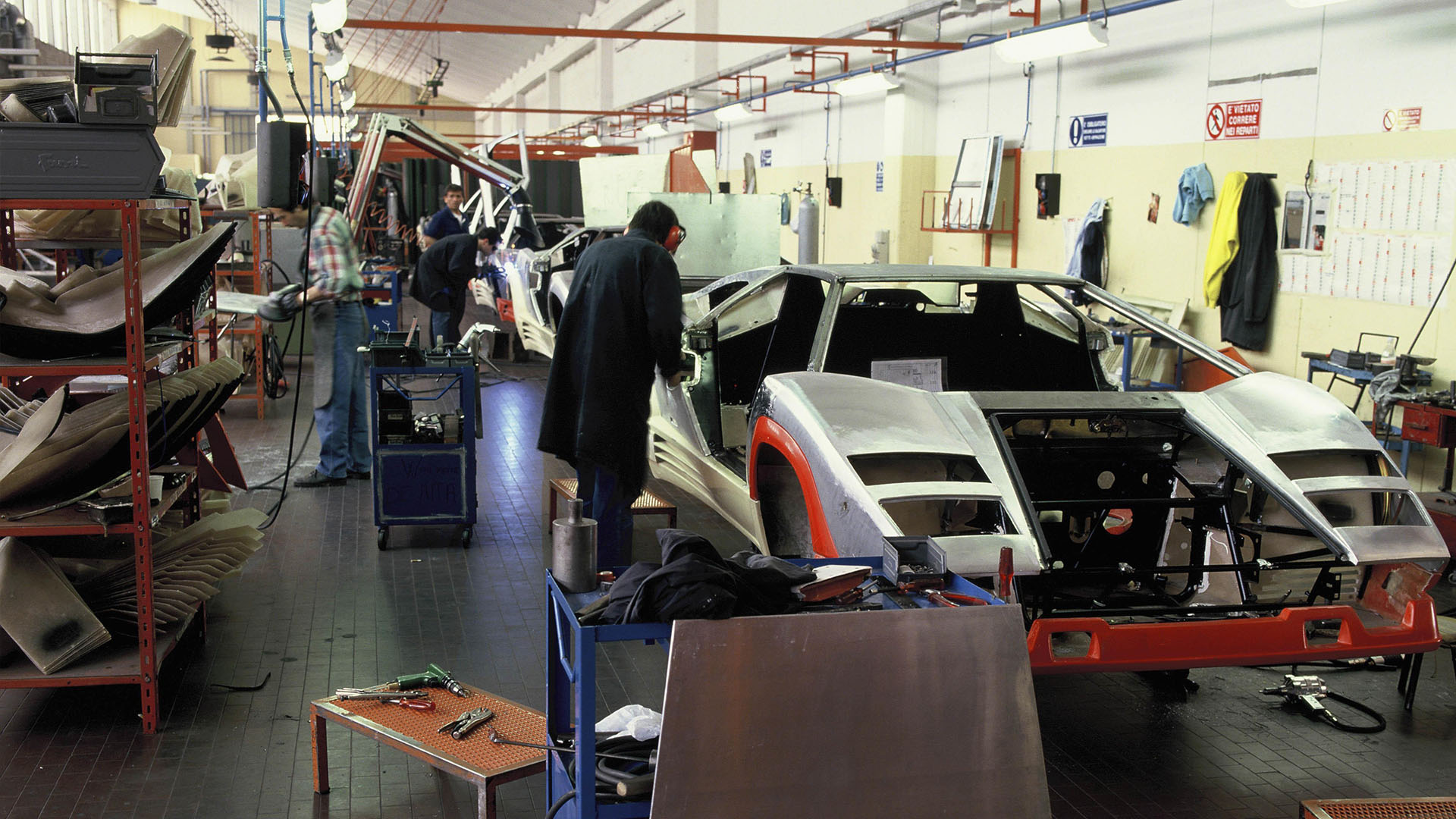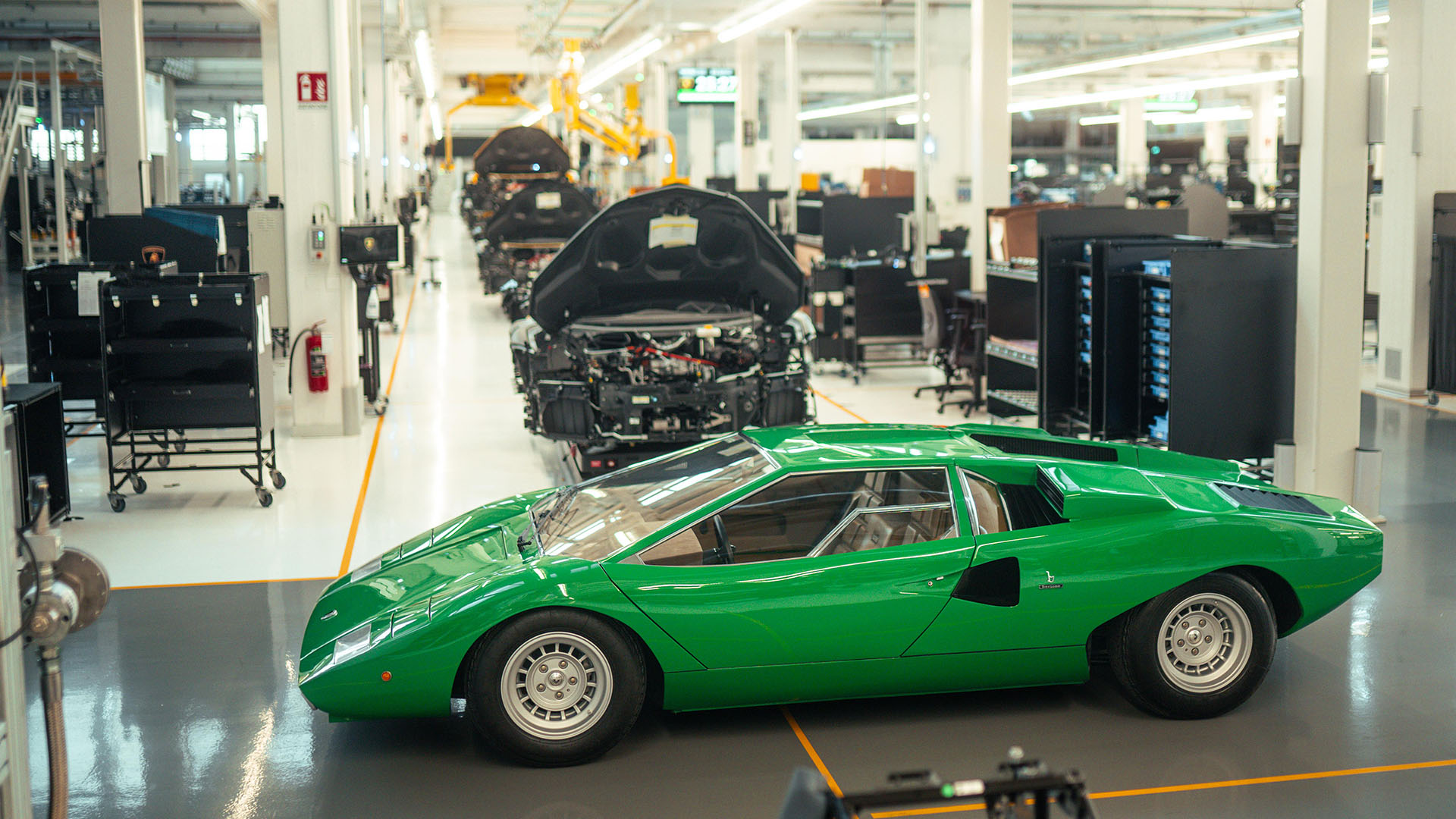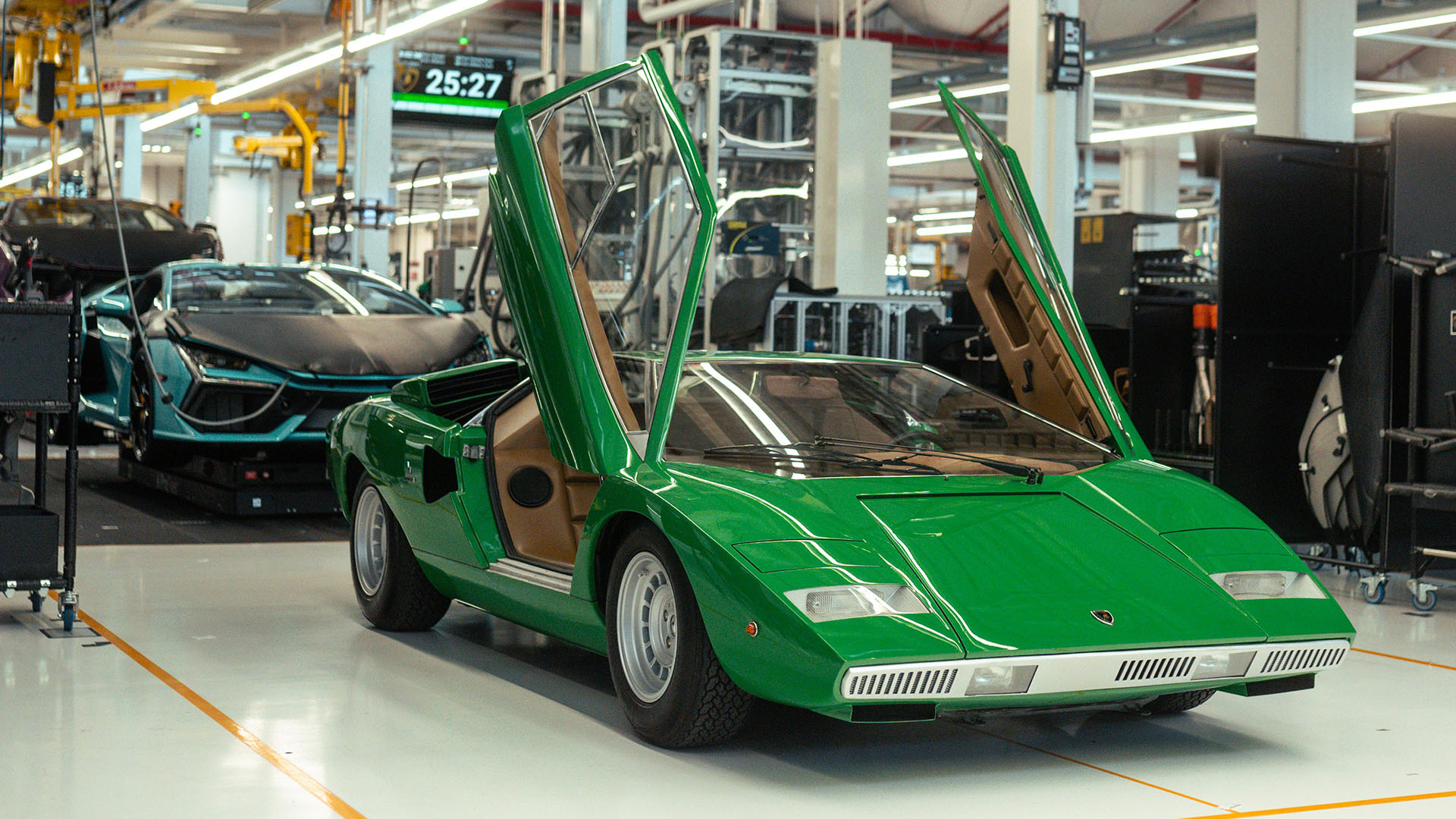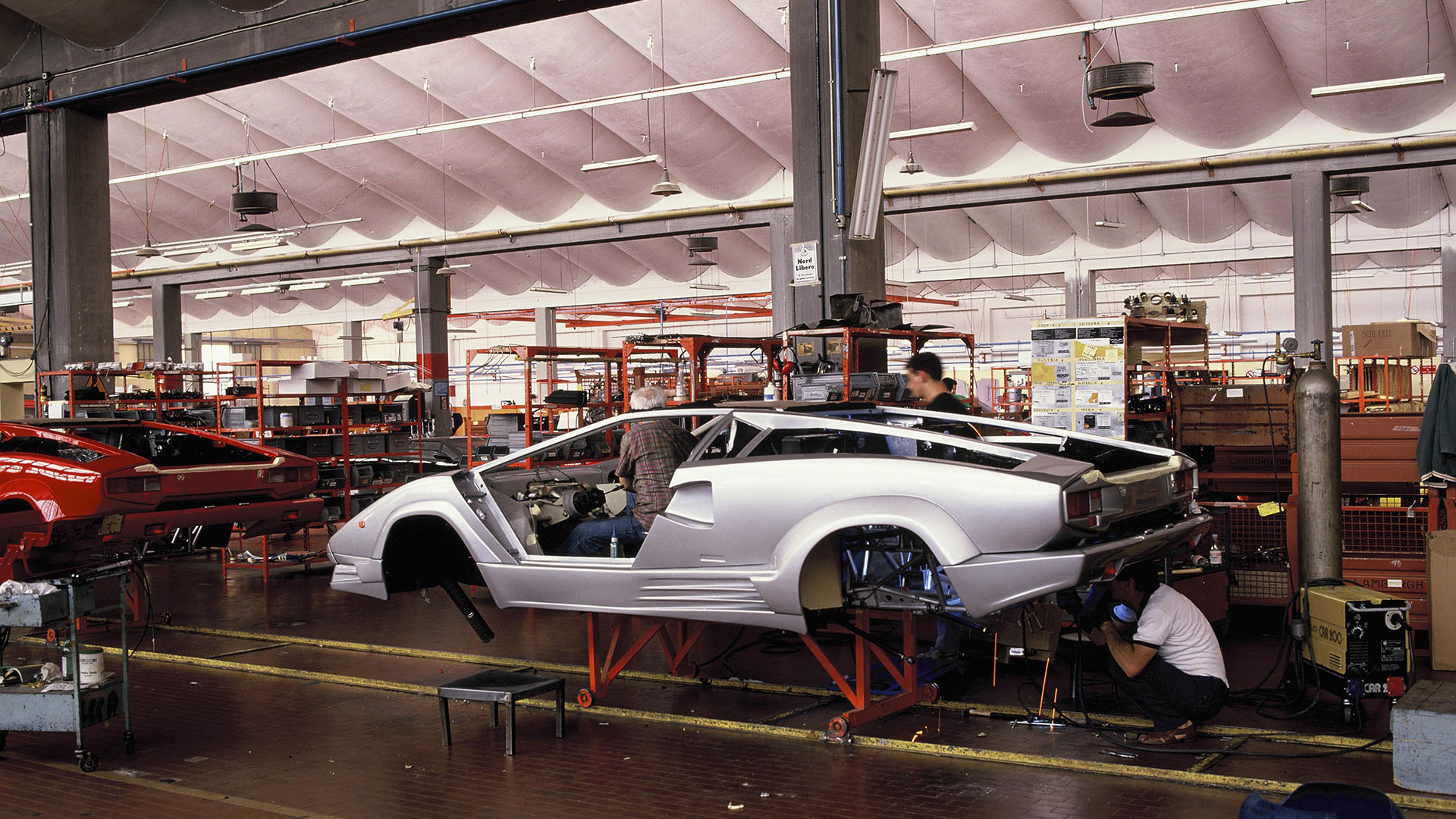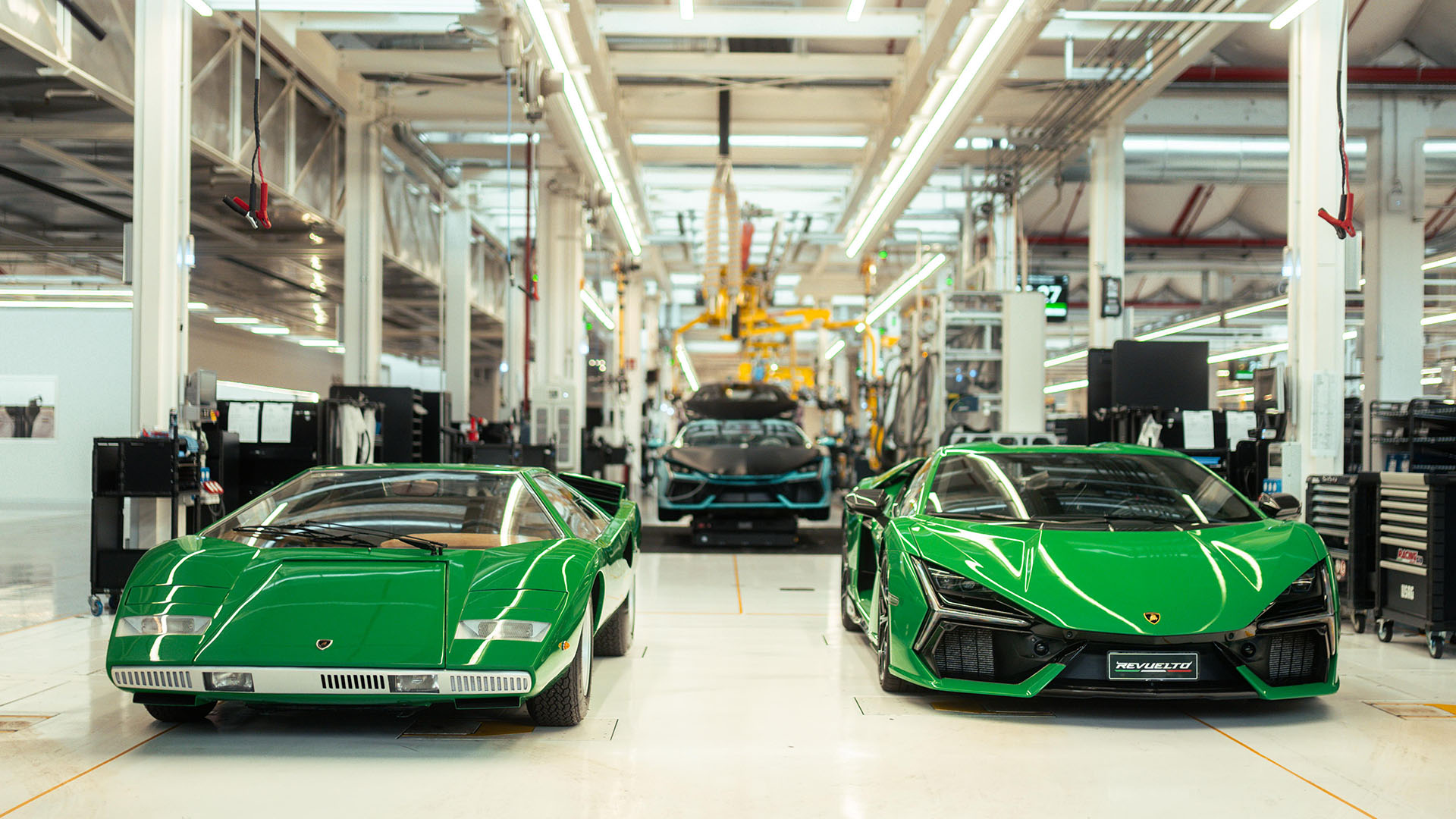50 years ago the automotive world changed forever, Automobili Lamborghini SpA in Sant’Agata, Italy started building the legendary Countach which was unveiled as a yellow prototype back in 1971, but the first production of actual customer cars didn’t happen until 1974, so this year is the actual fiftieth anniversary of the Countach, and not back in August 2021 when they revealed the Countach LPI 800-4 as an homage to the original prototype, 2024 marks the anniversary of the Countach, more specifically of the original, narrow body, persicopio Countach LP400.
Today, 50 years later, these initial models have become the most valuable, and we’ve seen LP400 models that were later modified into S models with the large wheel arch extensions, wider wheels, and massive rear wing, being reverted back to narrow body factory original specs, and make no mistake, a Concours condition Countach LP400 is worth well into the seven figures today while its evolutions, the LP400S, LP500S, Quattrovalvole and 25th Anniversary are still well below the seven figures mark, especially the final 25th Anniversary of which the most units were built is now the least valuable to collectors it seems.
Back in 1974, the Lamborghini Countach revolutionized car production, the aluminum panels of the Countach were ‘hand-beaten’ in-house at the factory in Sant’Agata, and more importantly, Lamborghini now had an upholstery department inside the factory building the interior for this new supercar, over a 16-year production span nearly 2,000 Countach left the factory gates, over 1,200 of those were the final version, the Quattrovalvole and the modernized 25th Anniversary which retained the four-valve per cylinder, 455 hp engine from the QV model.
“We are proud to still be producing our super sports car models in the place where the Countach was created,” commented Ranieri Niccoli, Lamborghini’s Chief Manufacturing Officer. “Production has radically changed since then and there was a marked transformation of many aspects starting with the production of the Countach right through to today’s models. Today our production is very different from 1974, but it retains the best aspects and brings together the manual skills of our operators and the best available technologies, giving rise to the so-called Manifattura Lamborghini Next Level. The common denominator between the production of the Countach and our cars today is attention to detail.”
Today the Lamborghini factory is quite different from the one where the Countach was built in 1974, construction of the original 12,000 m² factory grounds started in 1963 and took three years, by 1966 the factory could be inaugurated, complete with a production facility for both the gearbox and the differential, but also including offices, testing rooms, and service workshop along two ‘production lines’, one for engines and mechanical parts and a second one for actual assembly of cars, in 1968 they added another 3,500 m² with three additional buildings, but get this, in 1974 the Linea 1, or No.1 Countach Assembly line has been converted over the years, and it’s the exact same spot where the Lamborghini Revuelto is being built today.
Today the entire Lamborghini factory is a massive 346,000 m² and even holds a carbon factory production facility and three assembly lines, Linea 1 is still for the V12 flagship model, the Revuelto, while on a second assemble line the brand new Temerario will be built, and the Urus has an entire building for its assembly, but the most striking difference between 1974 and 2024 is surely the number of car being built, in the 16 years of production of the Countach, 1999 units were produced; the 11 years of production of the Diablo generated 2903 units; the nine years of the Murciélago produced 4000 cars; and the 11 years of the Aventador over 11,000.
Something that hasn’t really changed since the Lamborghini Countach is the basic driving set-up, as is the famous “Scissor” doors, these by now Lamborghini trademark upward opening doors have been introduced with the Lamborghini Countach, and have remained a distinctive feature of Lamborghini V12 cars, but if you look at any Lamborghini V12 flagship from the side, since the Countach, you’ll notice the extraordinary continuity from the Countach to the Diablo, then to the Murciélago and Aventador, the subtle visual line that runs between the front fender and the cockpit roof, ending with the rear spoiler, is still known as the “Countach line”.
The first version of the Countach, with 152 units produced, was the LP 400 (1974-1978), featuring fenders without extensions and a roof with a central recess designed for the rearview mirror, which earned it the nickname “Periscopio”. The LP 400 S (1978-1982), with 235 units, was derived directly from the special LP 400 that the Canadian enthusiast Walter Wolf commissioned at Lamborghini. The LP 400 S was characterized by the adoption of Pirelli low-profile tires, wheel arch extensions, “phone dial” wheels, and the aerodynamic appendage positioned below the front part. This configuration, albeit improved and better integrated in later versions, became the distinctive feature of the Countach for the following decade. The 5000 S (1982-1984), produced in 323 units and with few changes in terms of aesthetics, featured a V12 with an increased displacement of 4.8 liters. The Countach Quattrovalvole that followed (1985-1988), with 631 units, was visually characterized by the “hump” on the hood, necessary to contain the 5.2-liter engine, equipped with a 4-valve timing system for each cylinder.
The Countach 25th Anniversary (1988-1990), with 658 units, was created to celebrate 25 years since the company’s foundation and involved a total overhaul of the Countach’s aerodynamic appendages. The air intakes on the rear fenders and some panels, such as those on the hoods, also changed and were made of carbon fiber for the first time. It is worth noting how the commercial success of the Countach was always on the rise and how it was the last two versions that were produced in the greatest numbers, benefiting from the type-approval obtained for the sale of the Countach on the American market.


